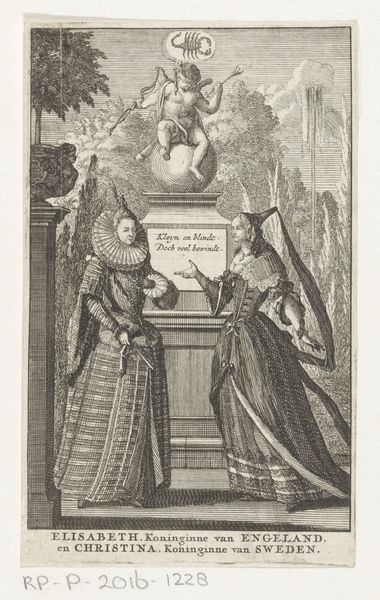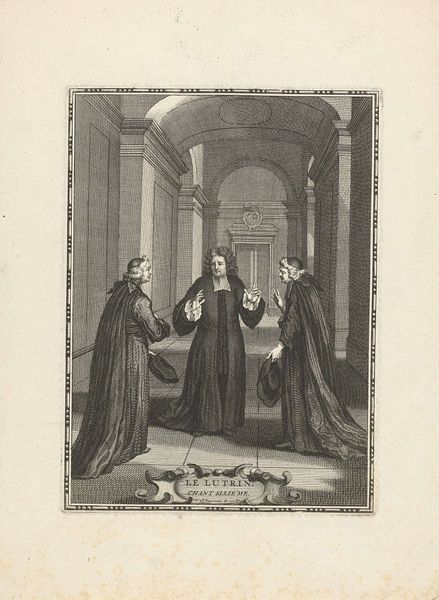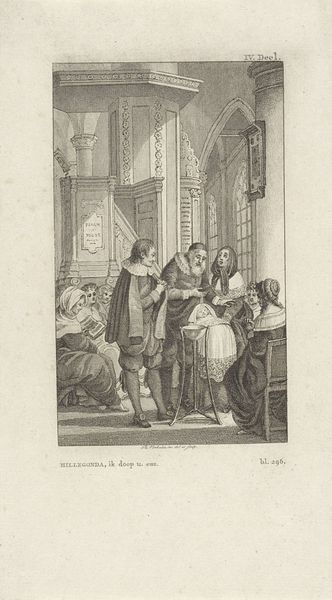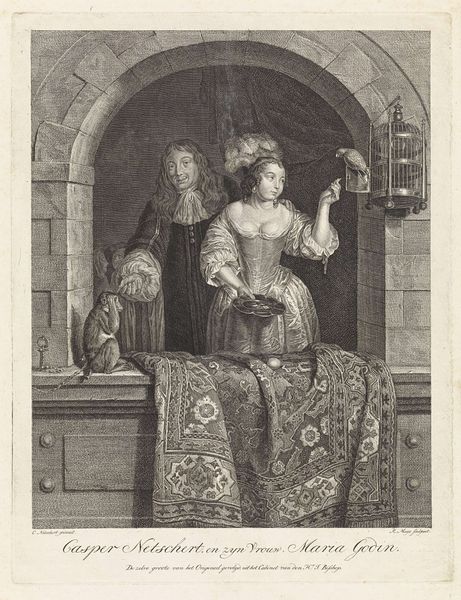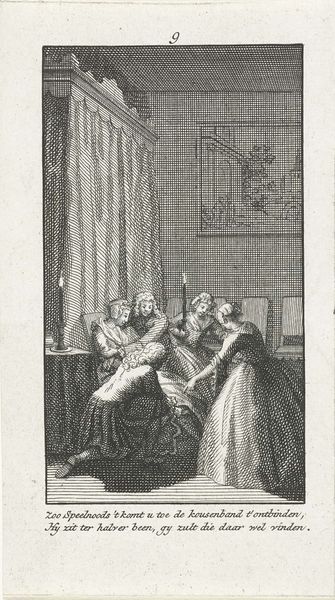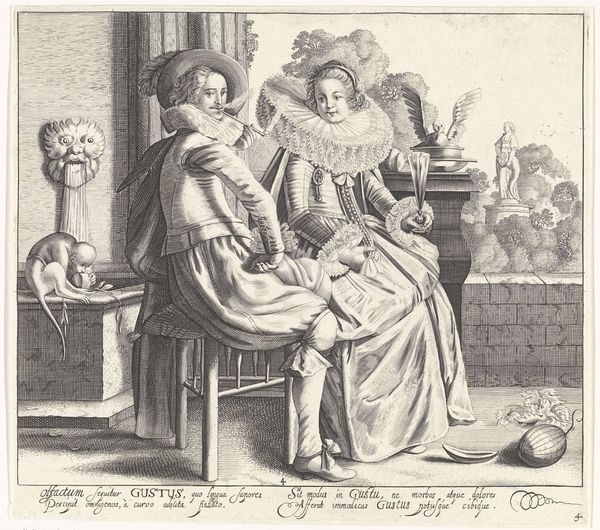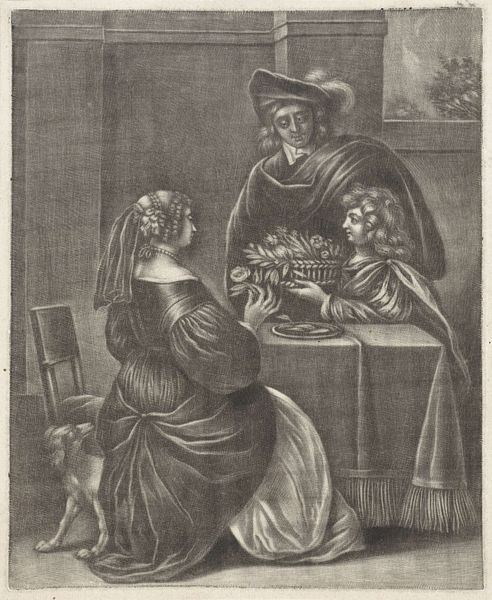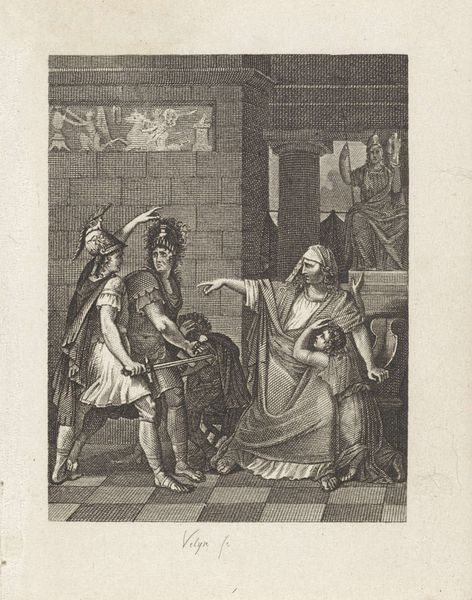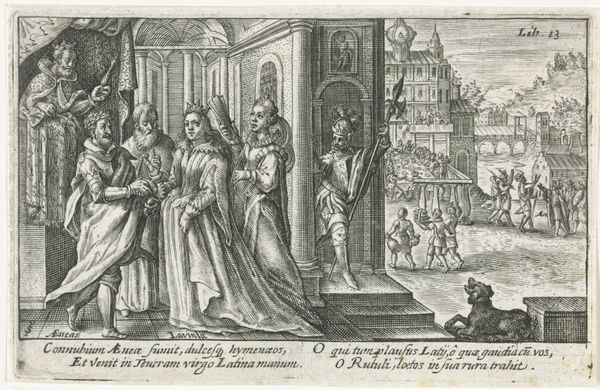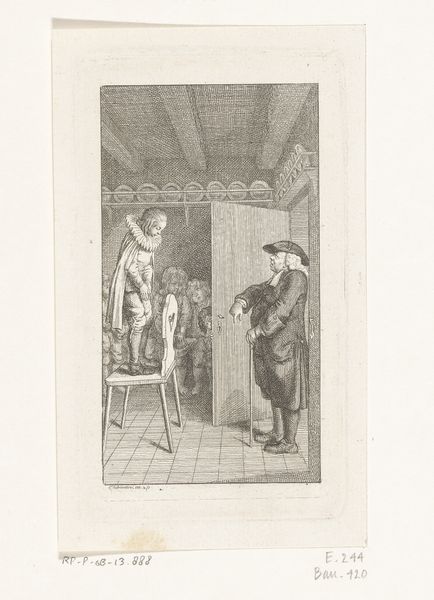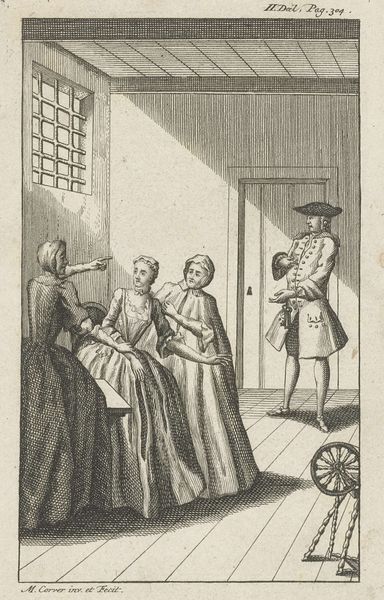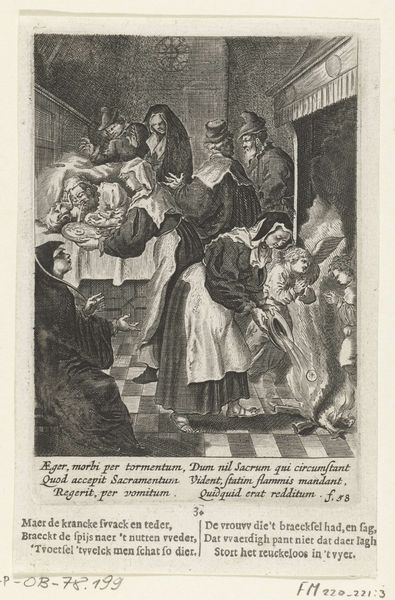
Het aanbieden van een petitie aan de Engelse staatssectretaris, ca. 1654 1673
0:00
0:00
print, engraving
#
narrative-art
#
baroque
# print
#
old engraving style
#
history-painting
#
engraving
Dimensions: height 175 mm, width 133 mm
Copyright: Rijks Museum: Open Domain
Editor: Here we have "Het aanbieden van een petitie aan de Engelse staatssecretaris," or "The Presentation of a Petition to the English Secretary of State," an engraving made around 1673 by William Sherwin. It’s quite intricate, all these fine lines building up to form a rather serious scene. What catches your eye when you look at it? Curator: The process of engraving itself is paramount. Notice the sheer labor invested in those dense, cross-hatched lines; it's a testament to the engraver's skill and time. Think about the socio-economic context: who commissioned this work, and why? The print medium inherently implies dissemination, challenging ideas about artistic exclusivity. Were these prints meant to inform, persuade, or simply commemorate this petition? Editor: So you're suggesting we consider not just the image itself, but also who made it, and how that might influence its purpose? Curator: Exactly. Furthermore, the petition *itself* depicted within the engraving. Consider the materials involved in *that* process: the paper, the ink, the labor of writing and signing. It all speaks to a concentrated effort of many hands and voices trying to advocate or make a demand on those in power, no? Editor: It really brings a whole new perspective to thinking about an image; it is never just the image itself. Curator: Indeed. We often overlook how deeply interwoven art production is with the broader economic and political systems of the time. Considering such details of the "material world," enables us to better view artwork as more than just a beautiful composition of subject, light and shadow. It becomes an item of exchange, value, and impact.
Comments
No comments
Be the first to comment and join the conversation on the ultimate creative platform.
